Master Artist Apprentice Program Exhibition, October 8 – December 3, 2020
From Krishna Adams, Director of Visual Arts, Craft, Media and Design –
The Master Artist Apprentice Program (MAAP) is a cooperative partnership between the Tennessee Arts Commission and Tennessee Craft. The mission of this collaboration is to encourage and invest in the continuation, advancement, and creation of craft in Tennessee by recognizing the role of the master craft artist and apprentice relationship to preserve the state’s cultural heritage. This partnership provides craft artists with relevant and alternative educational experiences, promotes and facilitates fine craft as a viable career path for Tennessee artists, fosters deliberate mentoring, facilitates the professional development of emerging craft artists, increases the pool of craft artists, and provides craft artists in Tennessee alternative means of professional funding.
This year, Tennessee craft masters shared their significant skills and creative aptitude by providing one-on-one mentoring instruction with apprentice artists to encourage, strengthen, and grow their artistic foundation. In its eleventh year, the MAAP partnership continues to cultivate the traditional master/apprentice relationship by awarding selected artists with a grant to ensure craft art is nurtured in Tennessee.
The following partners worked together to sustain craft for the next generation:
- Clay: Carrie Anne Parks, Master (Chattanooga) and Pam Bullard, Apprentice (Signal Mountain)
- Wood: Rick Cannon, Master (Memphis) and William Bleau, Apprentice (Arlington)
- Textile: Rena Wood, Master (Cookeville) and Mirrah Johnson, Apprentice (Silver Point)

Carrie Anne Parks, Master (Chattanooga)
“My work reflects an ongoing interest in historical ceramic forms – tiles, teapots, and figures. In my drawings and ceramic sculptures, I also explore contemporary themes through personal, often autobiographical imagery. The elements of traditional teapot design – spouts, lids, handles, and feet are incorporated into the gestures, costumes, and coifs of my figurative teapots in ways that are sometimes metaphorical, often humorous. In this series of Women Artists Teapots, I have combined portraits of the artists with aspects of their artwork in ways that honor the artists’ own representations of themselves as professionals in their fields.” – Parks
Parks serves as an Emerita Professor of Art & Design at Alma College in MI. She is also a part-time Instructor at Scenic City Clay Arts in Chattanooga. In 1981 she earned an M.F.A. at Virginia Commonwealth University in Richmond, VA.
She has received numerous grants and awards, and her ceramic work has been exhibited across the country at museums and galleries such as the Clay Center of New Orleans, LA; the Johnson Center for the Arts in Troy, AL; Pewabic Pottery in Detroit, MI; Saginaw Art Museum and Marshall M. Fredericks Sculpture Museum in Saginaw, MI; Dennos Museum Center in Traverse City, MI; San Angelo Museum of Fine Arts in San Angelo, TX; the Firehouse Craft Gallery in Rochester, NY; Museum of American Ceramics in Pomona, CA; Chiaroscuro Gallery in Chicago, IL; Rosewood Gallery in Kettering, OH; Kennedy-Douglass Center for the Arts in Florence, AL; Oklahoma State University in Stillwater, OK; and College of William and Mary in Williamsburg, VA among others.
In Tennessee, her work has been shown at the Customs House Museum and Austin Peay State University in Clarksville, Chattanooga Workspace Scenic, University of Memphis, East Tennessee State University in Johnson City, Parthenon Gallery in Nashville, the Hunter Museum of American Art and Scenic City Clay Arts in Chattanooga.
Her works can be found in various collections as well, including Austin Peay State University in Clarksville, TN; Auburn University in Auburn, AL; Rutgers University in Camden, NJ; Clemson University in Clemson, SC; Saginaw Valley State University in Saginaw, MI; Bradley University in Peoria, IL; Virginia Commonwealth University in Richmond, VA; Grand Valley State University in Allendale, MI; and Alma College in Alma, MI. Visit her website for more information.
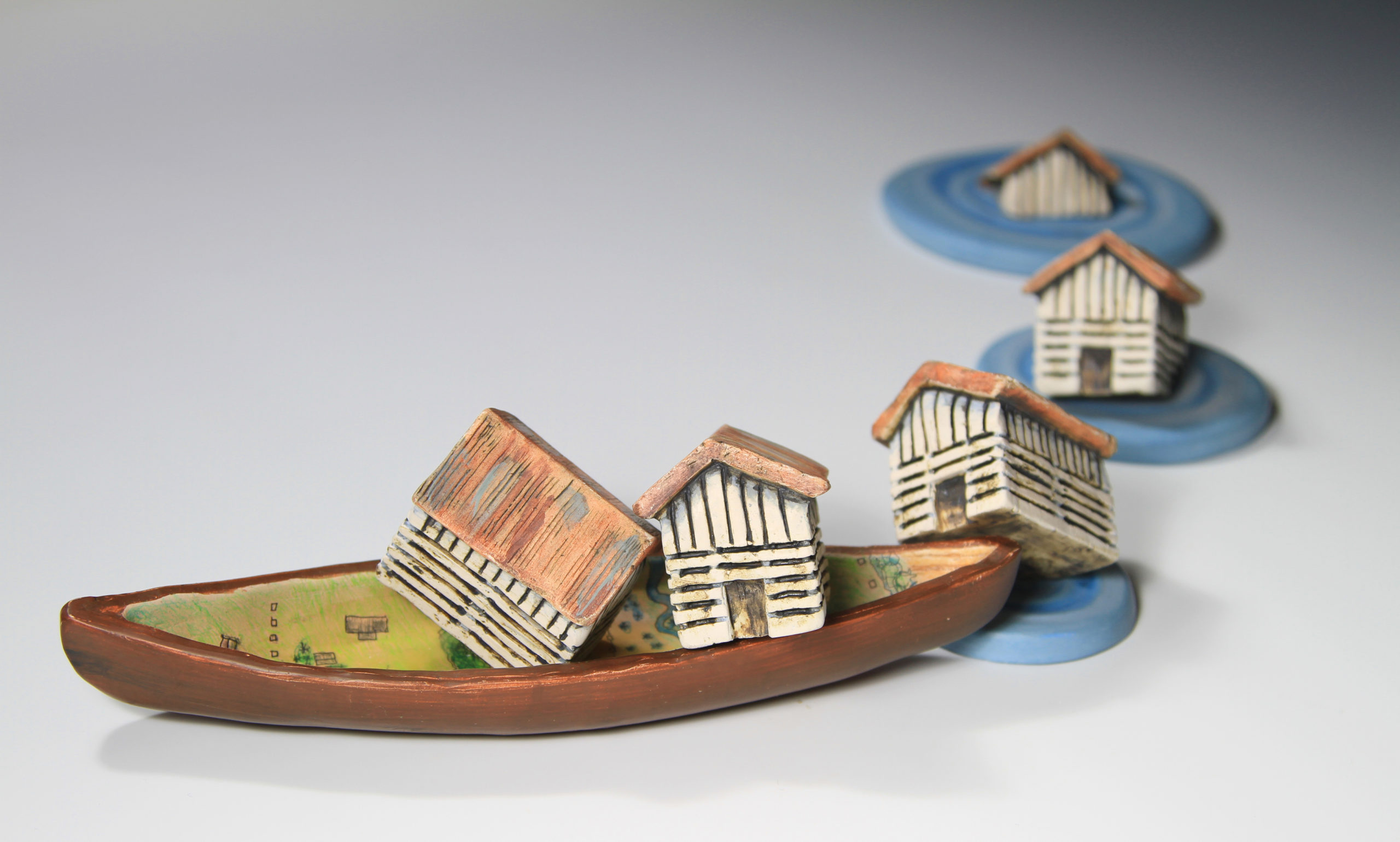
Pam Bullard, Apprentice (Signal Mountain)
“Art is an opportunity to explore the relationship between oneself and the world. By varying the point of view and working on personally meaningful components,
such as boats, barns, and maple seeds, I explore ideas without committing myself to a single interpretation. Surface treatments and recurring icons help me make
sense of ideas that are incomprehensible and conflicted. Existence and truth are composites of multiple experiences, not solitary encounters.
Truth is not solid but fluid and dependent upon who is doing the perceiving. Life doesn’t exist in a vacuum, and neither does art. Once I send a piece off into the world, it ceases to be a solitary meditation and transforms into a collaboration of the viewer’s experience blended with mine. No matter the explanation offered, we will never interpret the work in the same way. Observe and complete the experience.” – Bullard
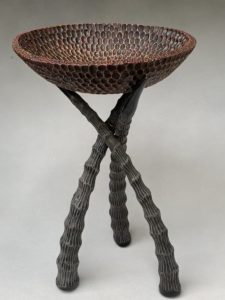
Rick Cannon, Master (Memphis)
For the last 20 years, Cannon has been a maker, learner, and teacher of fine craft and art. He has received numerous awards for his woodwork, including the Pink Palace Art Show Merit Award in 2013, Best of Tennessee Show in 2012, and the Memphis Association of Craft Artists Award of Distinction in 2011. He has also participated in exhibitions at the Rosenzweig Gallery in Durham, NC, the Shainberg Art Gallery, and Pink Palace in Memphis, TN, among others.
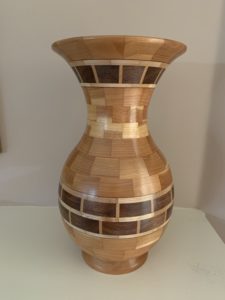
William Bleau, Apprentice (Arlington)
“I have been working with wood for many years; wood excites me because of its natural beauty (i.e., grain, texture, colors, patterns, and blemishes).
All these wood attributes inspire design opportunities that, as a craftsman, you can include in the design. Working with wood is an art since no two pieces are alike, and each piece of wood has its own beauty that is there and waiting to be enhanced by the design. For me, wood is the best medium to work and design.” – Bleau
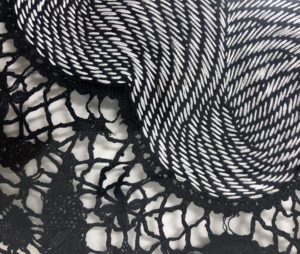
Rena Wood, Master (Cookeville)
“My work gives physical form to the ephemeral sense of memory. The time I spend working is marked by each stitch, each knot, and each repetitive act of my hands. The result of my slow and repetitious handwork connects my process to the biological phenomena occurring all the time, gradually growing, multiplying, or deteriorating.
I use stitching to create drawings on the surface of cloth to show a suspension between formation and falling apart, the acts of remembering and forgetting, and to represent time passing and time stopped. I am intrigued by ideas about the visual aspects of how memories might appear in our brain and the changes that occur as memories are lost. I believe that textiles have the power to hold the histories of the past and the presence of the makers.” – Wood
Wood graduated from Virginia Commonwealth University in Richmond, VA with an M.F.A. in Craft/Material Studies and received her B.F.A. in Fiber at the Kansas City Art Institute in Kansas City, MO. Over the years, Wood has shared her skills through teaching. Since 2018 she has been an Assistant Professor in the School of Art, Craft, and Design at Tennessee Technological University’s Appalachian Center for Craft in Smithville, TN. She has also been a Visiting Instructor at Bloomsburg University in Bloomsburg, PA; Visiting Faculty at the Kansas City Art Institute in Kansas City, MO; Visiting Assistant Professor at Skidmore College in Saratoga Springs, NY; Adjunct Faculty at Houston Community College in Houston, TX; Adjunct Faculty at Virginia Commonwealth University in Richmond, VA; and instructor at Arrowmont School of Arts and Crafts in Gatlinburg.
For over 15 years, Wood’s textiles have been exhibited extensively at museums and galleries, including Marshall University in Huntington, WV; Berea College in Berea, KY; McNamee Gallery, and Craft Alliance Center of Art and Design in St. Louis, MO; GoggleWorks Center for the Arts in Reading, PA; Galveston Art Center in Galveston, TX; Pittsburgh Center for the Arts and Society for Contemporary Craft in Pittsburgh, PA; Houston Center for Contemporary Craft in Houston, TX; Muskegon Museum of Art in Muskegon, MI; Art Center at Chautauqua Institution in Chautauqua, NY; Corkran Gallery in Rehoboth, DE; and Craft Alliance Gallery Grand Center in St. Louis, MO. In Tennessee, her work has been exhibited at East Tennessee State University in Johnson City, Appalachian Center for Craft in Smithville, and Arrowmont School of Arts and Crafts in Gatlinburg.
Wood has been the recipient of numerous awards such as the 2016 Joanne Purrington Folley Memorial Award for Excellence in Needlework at the Fiberart International, 2015 Honorable Mention at Materialities Contemporary Textile Arts at Arrowmont School of Arts and Crafts, 2013 Graduate Thesis/Dissertation Assistantship at the Virginia Commonwealth University, 2012 Best in Show, 4th Annual Juried Exhibition at the Rehoboth Art League in Rehoboth, DE; 2010 Award of Excellence, Articulated Vision at Art St. Louis in St. Louis, MO; and in 2007, 2nd Place Best in Show, Taste for the Arts Art Fair in Hermann, MO; among others. See more of Wood’s work here.
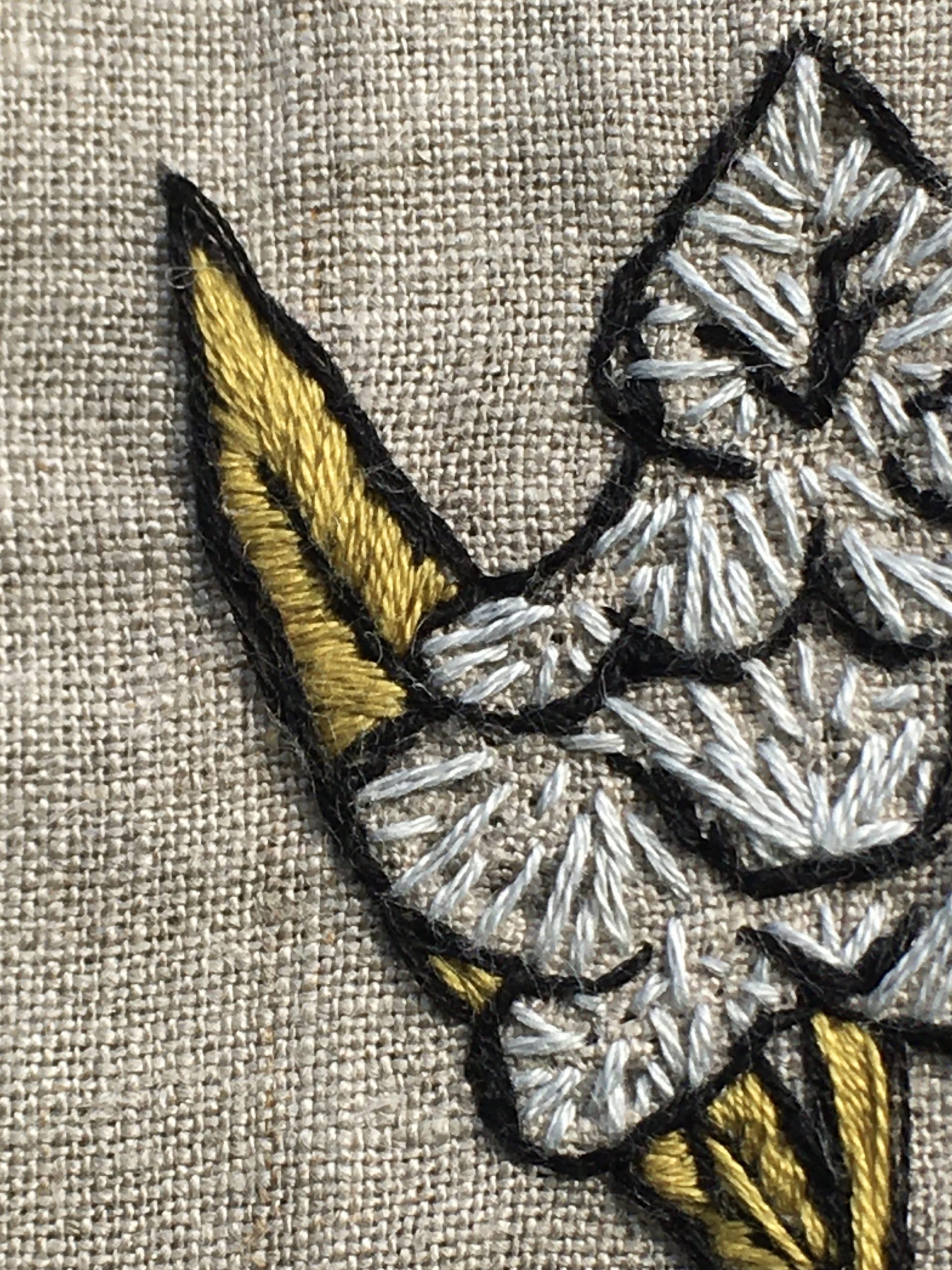
Mirrah Johnson, Apprentice (Silver Point)
“After an invaluable experience of learning from Wood about embroidery, I set out to make a series of purposefully made pieces using this medium. After a period of indecisiveness within the chaos that is the year 2020, I realized that what I wanted to focus on was obvious and hidden in plain sight. In early spring of 2019, I noticed, with a newly sharp awareness, a familiar plant growing all over my yard. I suddenly realized that I did not know the name of this lovely plant I saw every spring of my 26 years. A short internet search later, I was reading about Purple Dead Nettle, a plant that is both sprayed with herbicides as well as harvested for food and medicine. I chose the latter, and it made a delicious pesto. During this moment in history, a moment in which a pandemic has descended upon a world, I have chosen to embroider plants.
While some may see this as frivolous subject matter, it is full of meaning and consequence. Plants are powerful beings. I have always felt a closer connection with them than I have with most humans. All humans are capable of sensing this connection, but many of us are not taught that we have an innate and powerful relationship with plants. Some of the species I have chosen to embroider are often considered “weeds” and are sprayed routinely with chemicals for the sake of a perfect, green lawn. These “weeds” are actually edible and medicinal. As one might do for a dear friend, I have created loving portraits of three plants using thread on fabric, soft materials we are intimately familiar with, and which are made of plants themselves. Skullcap assists my nervous system regularly, Purple Dead Nettle is an early spring, wild edible and medicinal, and Solidago, or Goldenrod, is a beautiful autumn, medicinal, and yellow dye plant. In a world where we are led to believe that capitalism is the only economic system that truly works, that there will always be poor and starving people, and that there simply are not enough resources for everyone, learning the names and histories of the edible and medicinal plants that routinely offer themselves to us is a simple but revolutionary act. The contemplative stitching of a few of these plants is a part of something I have come to view as crucial: my growing relationships with plant allies. I paint portraits in the thread of these plants in an effort to grow closer to them and to share that important relationship with the viewer. I give credit to the work of Robin Wall Kimmerer, Marc Williams, and, more recently, Justin Robinson, among many others, for helping me reawaken to a more whole relationship with plants.” – Johnson

